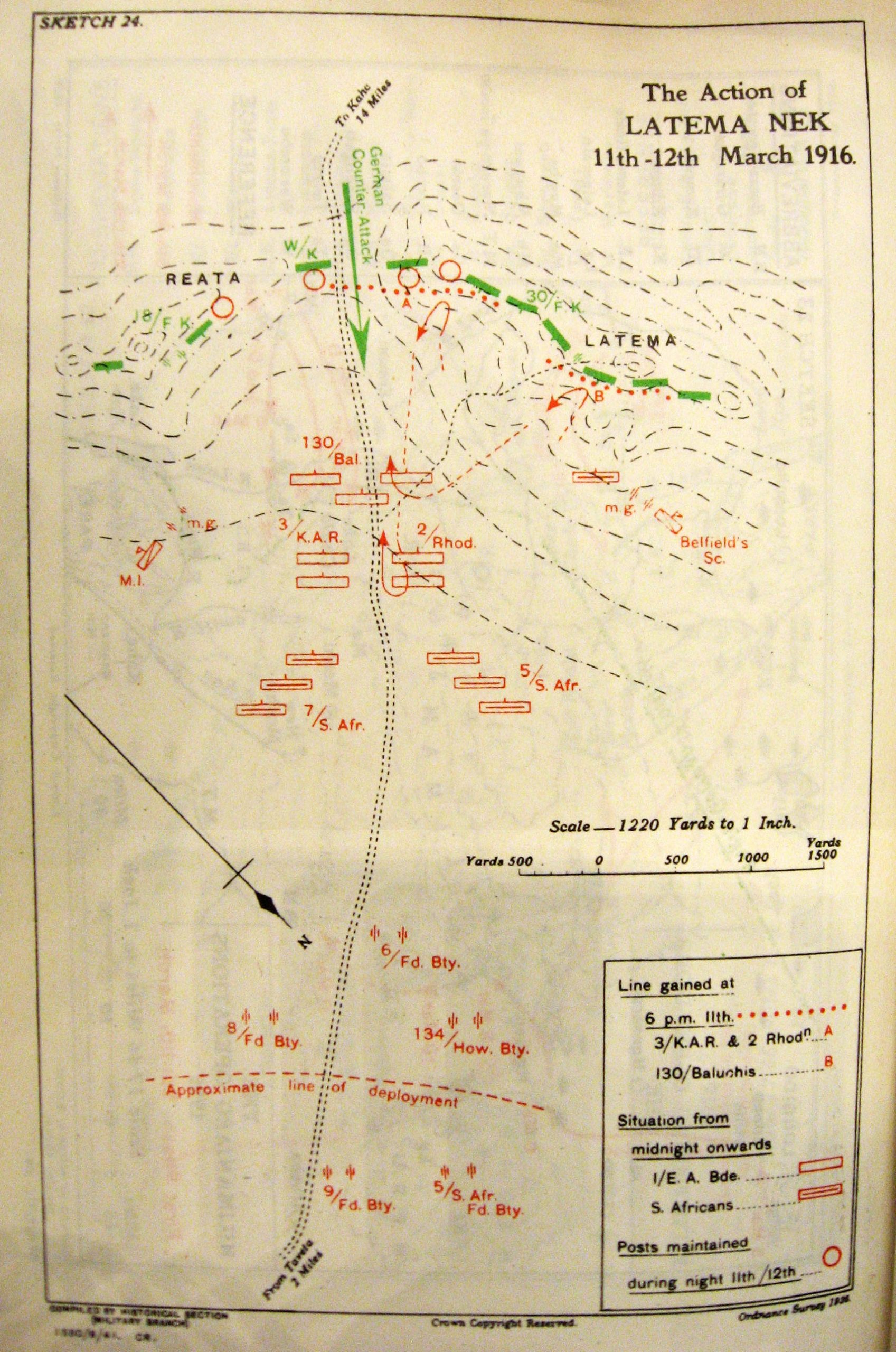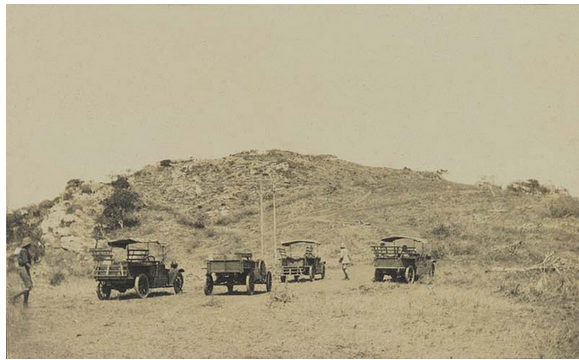Reata-Latema Nek
Sally Wilson
Thomas Wilson also participated in the battle that occurred in March 1916 in the Latema-Reata Nek area south-east of Mount Kilimanjaro
After the British suffered defeats on many fronts in 1914 and 1915, General Jan Smuts was brought in to reverse a floundering campaign. Smuts was a South African who had fought against the British in the Boer Wars, but since then had concluded that allegiance to Great Britain was in the best interests of his country. He arrived in Mombassa in February 1916 with a large number of South African troops and immediately set about touring the Longido-Taveta front to survey the situation and to determine how best to rid the area of the enemy. The area is mountainous and one of the few routes available for pushing into German East Africa lay between the Latema and Reata hills. It was imperative that this area be taken prior to the imminent arrival of the rains as they would render further movement impossible.
The forces were ready for action on March 4. Smuts’s plan of attack involved troops converging in the Taveta region from several directions. The 1st Division commanded by Major-General Stewart was to march south from Longido to cut off the enemy’s line of communication and to be in position to route the retreating Germans. Stewart started advancing on March 5 and on the first day covered 33 miles of waterless ground, primarily at night. After this initial rapid advance, further movement was hampered due to dense scrub and limited knowledge of the position of the enemy. By March 10, the density of the bush led Stewart to decide to proceed with his dismounted units as terrain was too difficult for the horses. The vanguard proceeded to the Sanya River.
From the East, the South African Mounted Brigade and the 3rd South African Infantry under Colonel J. van Deventer moved to seize the Chala Heights while Major-General M.J. Tighe was tasked with moving against Salaita Hill which he did with tremendous artillery fire. On March 9 when his troops ascended the hill, they found it deserted. Unfortunately the German retreat had not been intercepted.
On March 11 Lieut-General Smuts decided that a frontal attack on the German positions at Latema-Reata should commence. The troops used for this attack were approximately 1,500 men from Brigadier-General Malleson’s 1st East African Brigade: 130th Baluchis, 2/Rhodesia Regiment and 3/KAR. Reconnaissance made during the morning of the 11th did little to inform the units of the enemy’s defenses that were concealed along the crests of the two hills. 6.

3/KAR and the 130th Baluchis started to advance by noon, but were held up by enemy fire at the foot of the hill. Their leader, Malleson, left the field at 2:30 pm suffering from dysentery. His place was taken a short while later by Major-General Tighe who had just returned from his success in taking Salaita Hill. He deployed additional troops some of which were able to reach the crest of the hill. During this push Colonel B.R. Graham, of 3/KAR was killed, along with several of his officers and askari, as he led the advance. The Rhodesians pushed forward through the 3/KAR forces and held ground at the crest of the ridge until the Germans launched a strong counter attack. In the evening the 5/ and 7/South African Infantry commenced a night attack with bayonets. During the night communication amongst the various troops was lost. Smuts ordered Tighe to withdraw, but when day broke it became clear that British troops including some members of 3/KAR and the 2nd Battalion Rhodesian Rifles were still on the ridge.
Once Smuts realized that he still had men out in the field, he ordered the 8/South African Infantry and No. 9 Field Battery to rush forward from Taveta. This activity precipitated the German retreat from the two hills.
Although the British had succeeded in occupying the Reata and Latema Hills and clearing the way for the push into German East Africa, this was just the beginning of a prolonged pursuit of the enemy that continued for hundreds of miles through German East Africa into Portuguese East Africa and didn’t end until after the signing of the armistice.

Major-General Michael J. Tighe, Commander-in-Chief of British Forces 1915-1916.
B.R. Graham, Lieutenant-Colonel of 3/KAR was killed in the Battle of Latema Nek, March 11, 1916.
Askari is the Arabic word for soldier. During WWI in Africa, soldiers were recruited locally to serve in the Italian, British, German, Belgian and Portuguese armies.

